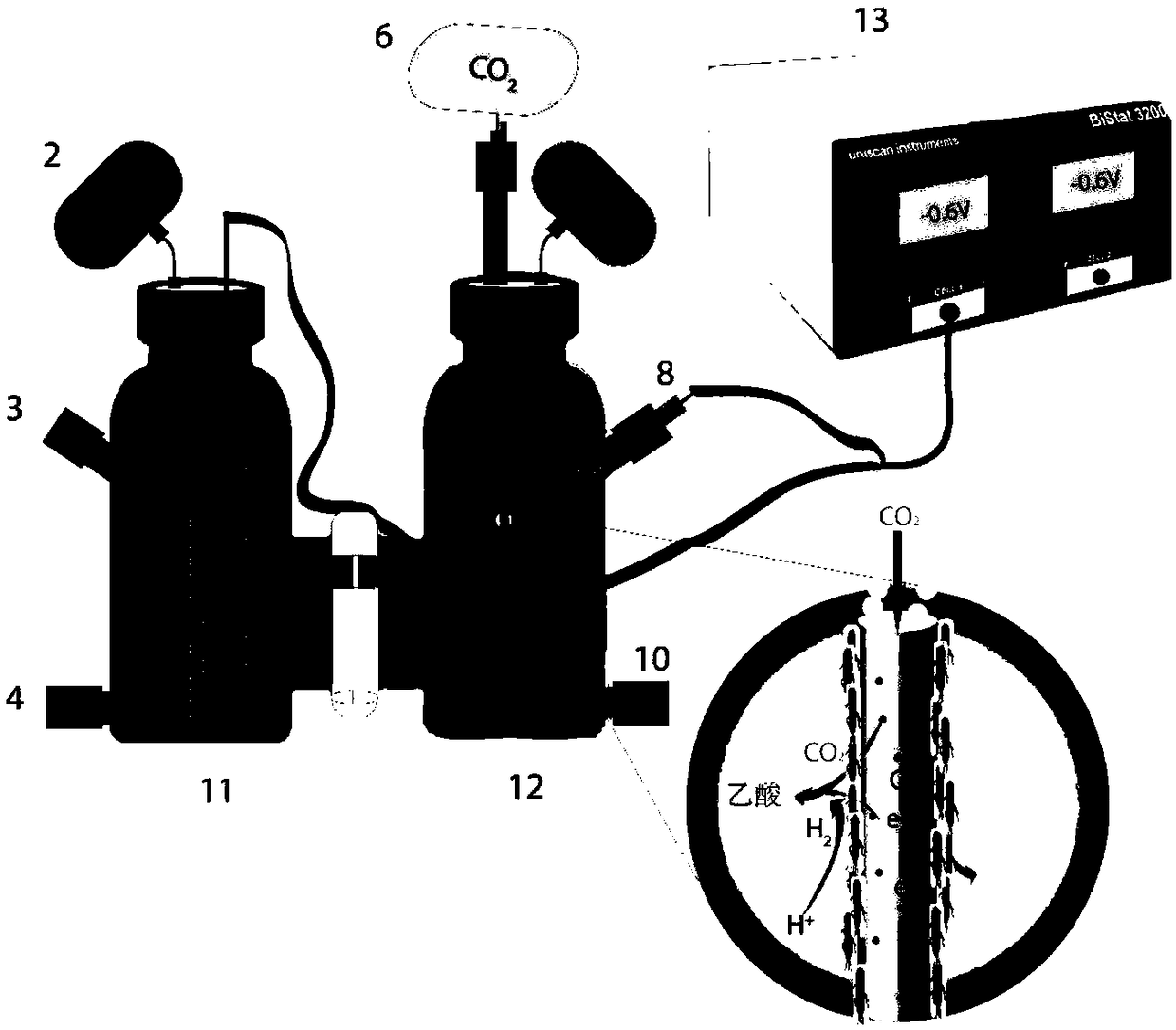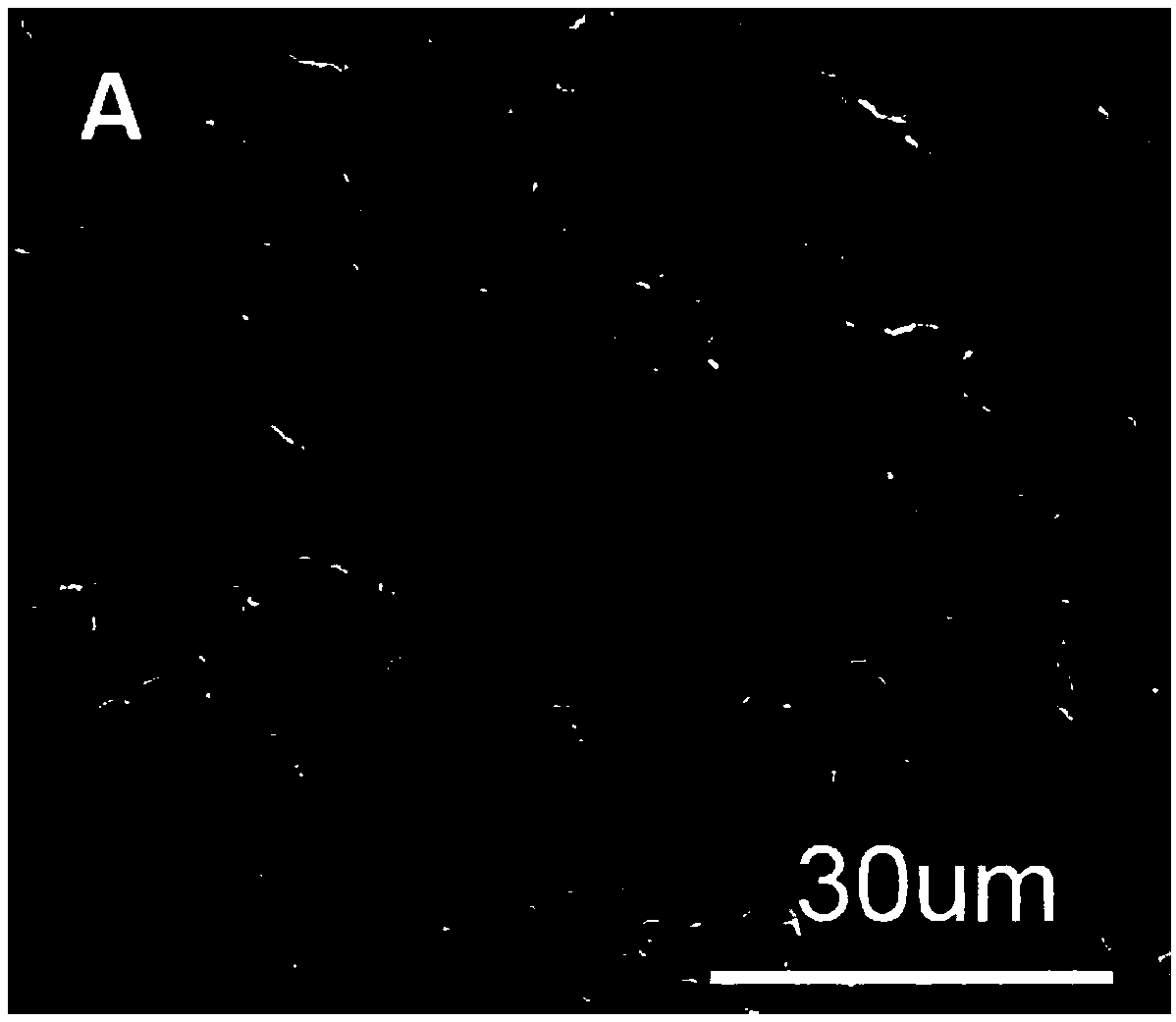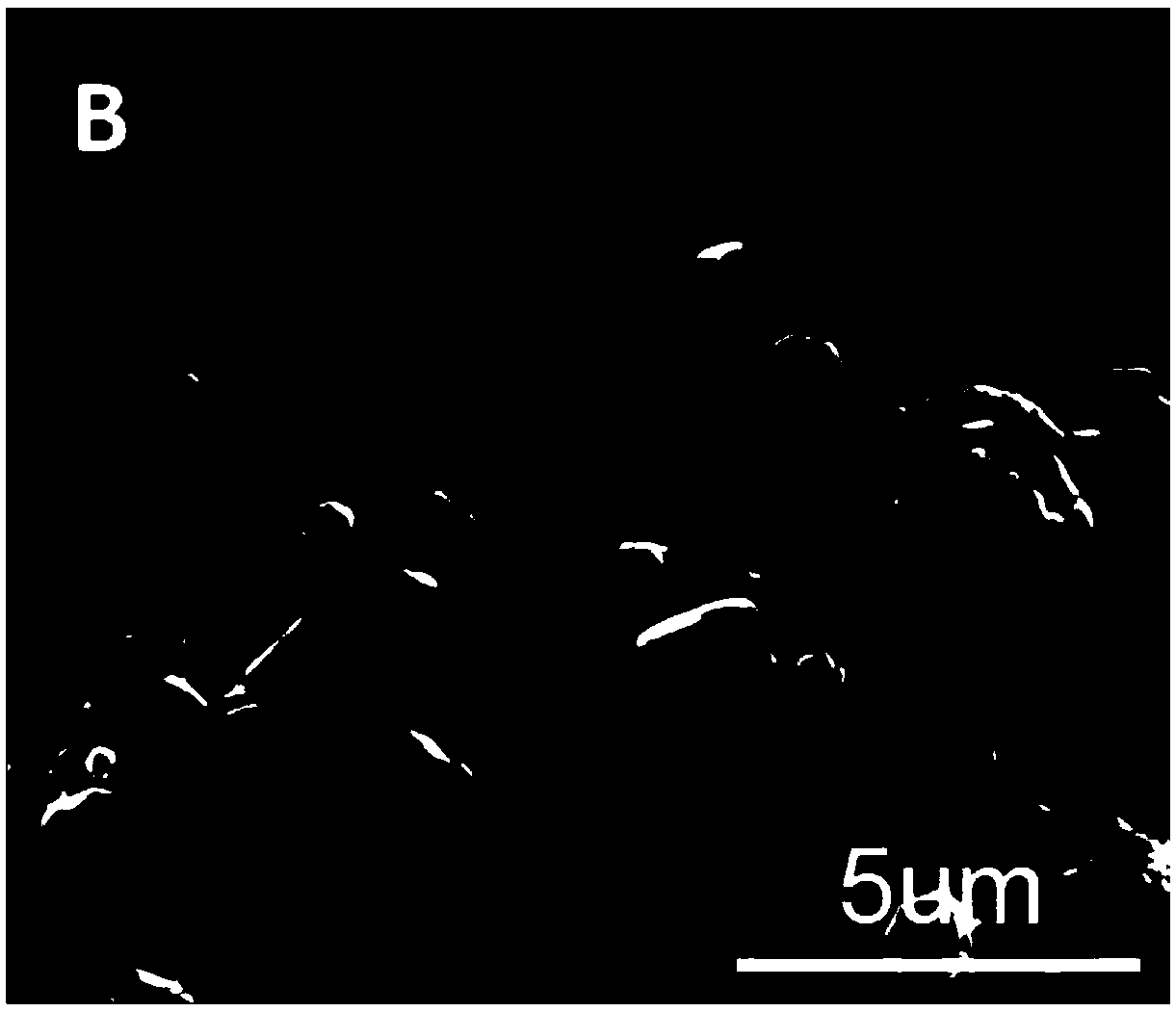Device for microorganism electrochemical reduction of carbon dioxide using microorganisms
A technology of microbial electrochemistry and carbon dioxide, applied in the direction of electrolysis process, electrolysis components, electrolysis organic production, etc., can solve the problems of difficult carbon dioxide transmission, accelerated microbial growth, inefficient diffusion, etc., to avoid gradual loss and eventually failure, energy utilization The effect of high efficiency and low cost
- Summary
- Abstract
- Description
- Claims
- Application Information
AI Technical Summary
Problems solved by technology
Method used
Image
Examples
Embodiment 1
[0031] This embodiment provides a microbial electrochemical carbon dioxide reduction device, the structure schematic diagram seefigure 1 , the anode 1 and the metal hollow fiber cathode 9 are respectively placed in the anode chamber 11 and the cathode chamber 12, and immersed in the anolyte and catholyte, separated by the proton exchange membrane 5, the electrochemical workstation 13 connects the anode and the cathode, and applies Cathode potential -0.6V vs. Ag / AgCl reference electrode 8 . The three-dimensional porous nickel hollow cathode is connected to the carbon dioxide air bag 6 located outside the cathode chamber, and the air bag is filled with nitrogen and carbon dioxide, and the volume ratio thereof is 80:20. After applying the cathodic voltage, the gas O that may be produced by the anode 2 The gas produced in the anode chamber is collected by the collection bag 2, while the gas such as hydrogen produced in the cathode chamber is collected by the cathode gas product co...
PUM
| Property | Measurement | Unit |
|---|---|---|
| thickness | aaaaa | aaaaa |
| thickness | aaaaa | aaaaa |
| diameter | aaaaa | aaaaa |
Abstract
Description
Claims
Application Information
 Login to View More
Login to View More - R&D
- Intellectual Property
- Life Sciences
- Materials
- Tech Scout
- Unparalleled Data Quality
- Higher Quality Content
- 60% Fewer Hallucinations
Browse by: Latest US Patents, China's latest patents, Technical Efficacy Thesaurus, Application Domain, Technology Topic, Popular Technical Reports.
© 2025 PatSnap. All rights reserved.Legal|Privacy policy|Modern Slavery Act Transparency Statement|Sitemap|About US| Contact US: help@patsnap.com



